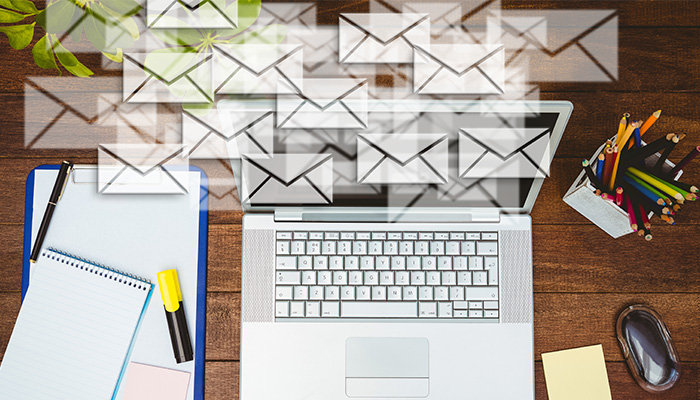The Ultimate Guide to Creating Cold Email Marketing Campaigns
The Ultimate Guide to Creating Cold Email Marketing Campaigns
August 25, 2023 17:35 PM
The Ultimate Guide to Creating Cold Email Marketing Campaigns
August 25, 2023 17:35 PM

Cold emailing has been proven to be a reliable and effective way of increasing conversions and outreach, which makes it a great marketing strategy.
Cold emails only work when they are done correctly. Cold emails can annoy recipients and may not lead to any business opportunities.
Cold emailing is a powerful tool to build your business network.
Use compelling subject lines and "from" lines to write an effective cold email. Introduce yourself and validate your credentials. Say something nice about the receiver, and explain why you are reaching out. Provide value by identifying their pain point and providing a solution. End with a CTA.
The article will go into detail about these steps. Cold email examples will demonstrate how these steps can be used.
You'll learn how to create a cold-email campaign and how you can use it to grow your company at the end of this post.
Let's begin the discussion by defining a cold email and identifying the characteristics of an effective one.
You can email anyone who does not express interest in communicating or connecting with you.
Clients or colleagues do not send them. They don't follow you or your company and haven't requested or consented to such emails.
This is the way many business relationships begin. Cold emailing is a great way to initiate such conversations.
Conversations are the beginning of business relationships in the offline world. You could, for example, attend an industry conference to meet people interested in your work. You will take every opportunity to introduce yourself to people and start a dialogue.
Cold emailing is a very effective way to communicate with people online. Cold emails allow you to start a conversation and hope the recipient will be interested in your company.
Here's a comparison of spam and cold emails.
The sales rep only sends cold emails to qualified leads, while spam emails are sent to a mailing list.
Successful cold emails tend to be personalized one-to-one. Spam floods recipients' inboxes, while spam is the same message.
Spam emails are usually misleading or contain malicious content.
Lead generation is the most common use of cold emailing by salespeople.
You send an email to a prospective customer to introduce your service or product. You explain your product or service's benefits and potential uses to a cold prospect.
You've got a warm lead to whom you can continue your sales conversation.
You can grow your audience and business by partnering with influential people or organizations.
Sending cold emails to partners is a great way to find referrals or affiliate partners.
Cold emails can be used to contact a potential partner. You can send your proposal and convince them you are a good match and that the partnership will benefit both parties.
Influencer Marketing allows a marketer to promote a service or product to a targeted, large audience.
You can reach out to influential people in your niche, such as key opinion leaders, celebrities, bloggers, podcasters, YouTubers, and podcast hosts.
Send them a cold email requesting a shoutout, review, or feature on their platform. This could generate more leads for you and your business.
Imagine that your website offers a blog with tons of helpful content.
This blog won't help you as a salesperson or marketer unless it is visited by your target audience, right?
Consider linking building to help your blog to get more exposure.
B2B marketers use link building to add links from a partner blog or channel to a post on their website. This will increase traffic to your website and boost your content marketing efforts.
Employees are the most essential part of a company.
If you want your company to increase, your recruiter or hiring manager must actively seek out promising candidates for different roles within your organization.
Your recruiter may find that the best candidates tend to be "passive candidates" or people who aren't actively searching for work.
Cold outreach emails can be used to reach multiple candidates without being intrusive.
Public relations can be a great way to get massive exposure for your product, service, or initiative.
Send a cold email to a reporter to ask if they would be interested in your story.
This media reference can boost your brand's image and attract visitors to your social media profiles or website.
Cold emails make research into markets easy.
Marketers can use cold emails to understand better the pain points experienced by the target audience or to test the viability of a new product. You could also use these emails for surveys or to gather market research information.
Determine whether your goal is to introduce your brand, nurture leads, or drive immediate sales. Clear goals guide your campaign's structure and content.
Define your ideal customer persona. Research their pain points, needs, and preferences to tailor your messaging accordingly.
Focus on quality over quantity. Ensure your email list comprises individuals genuinely interested in your industry or offerings.
Familiarize yourself with email regulations like GDPR (General Data Protection Regulation) and CAN-SPAM Act. Obtain explicit consent before sending emails and provide clear opt-out options.

Your subject line should be concise, intriguing, and relevant to the recipient's interests or pain points.
Address recipients by their name and segment your list based on factors like demographics, behavior, or location. Personalized emails have higher open rates.
Clearly state what value you're offering to the recipient. Highlight how your product or service solves their problems.
Use a clear and actionable CTA that guides the recipient on the next steps. Make it easy to understand and act upon.
Incorporate relevant img or graphics, but don't overcrowd the email. Balance visuals with concise text.
The majority of users check emails on mobile devices. Ensure your email design is responsive and looks great on various screen sizes.
People skim emails, so organize content with bullet points, subheadings, and short paragraphs. Make it easy for recipients to grasp your message quickly.
Use a recognizable sender name and a professional email address. This boosts credibility and encourages recipients to open the email.
Include references to well-known clients, success stories, or testimonials to establish trust and demonstrate your track record.
Provide a simple way for recipients to opt-out from future emails. This helps build trust and compliance with regulations.
Test different subject lines to identify what resonates best with your audience. A/B testing can lead to significant improvements in open rates.
Try different variations of email copy to gauge which language, tone, and content generate better responses.
Test sending emails at different times of the day and days of the week to determine when your audience is most responsive.
Drip Campaigns: Set up a series of emails that are automatically sent at predefined intervals. This nurtures leads and keeps your brand top-of-mind.
Craft follow-up emails for recipients who didn't respond to the initial email. A well-timed follow-up can increase response rates.
Utilize email marketing platforms that offer automation and sequencing features. These tools streamline the process and provide valuable insights.
Identify relevant KPIs such as open rates, click-through rates (CTR), response rates, and conversion rates.
Monitor how many recipients open your emails and interact with the provided links.
Measure the number of recipients who take the desired action after clicking on the CTA. This could be signing up, making a purchase, or requesting more information.
It can be just as nerve-wracking, if not more so, than sending the first email. How often should I follow up? What should I include in my follow-up emails? Do I need to follow up at all?
Answering the first question, yes, you absolutely should follow up! Around 80% of cold emails require five follow-up emails after the first email. So, there's no need to give up after one attempt. Most likely, the recipient missed or forgot your email the first time. It's also a way to show the recipient you are interested in hearing back from them.
When planning a follow-up email, there are some things to remember.
First, let your recipient know they can choose not to hear from you. Add a line at the end of the email instead of the unsubscribe button. It will make it seem less cold.
Avoid accusatory sentences such as 'You did not respond to my previous mail.' Be friendly and casual. You could, for example, say, "Just wanted to check in to see if you've had a chance" to review the offer I shared last week. The follow-up email should not be too information-heavy - it's meant to be a gentle reminder, not a sales pitch.
Daily follow-ups can be annoying and intrusive. Give yourself a reasonable time frame before sending a second email. A week will usually be enough time for the recipient to respond. If the first follow-up doesn't respond, send another one a week later.
If you don't receive a response after five or six follow-ups, your recipient may not be interested in what you are offering. Sending an email to thank them for their time and informing them that you will not be sending them any more emails is an excellent way to end the conversation. Include your contact details in the email so that you can be reached if the recipient changes their mind.
Creating effective cold email marketing campaigns requires a balance of creativity, strategy, and compliance. By understanding your audience, crafting compelling content, and leveraging the power of personalization and automation, you can unlock the potential of cold emails to drive leads, conversions, and business growth. Remember, continuous testing, optimization, and adherence to regulations are key to long-term success in cold email marketing.